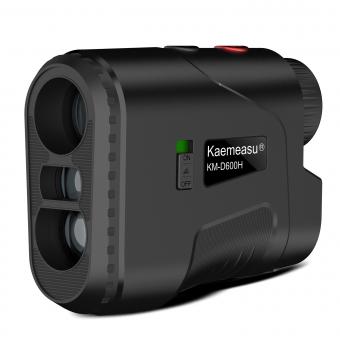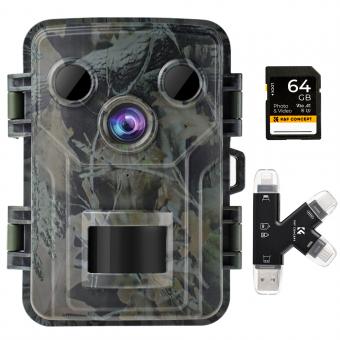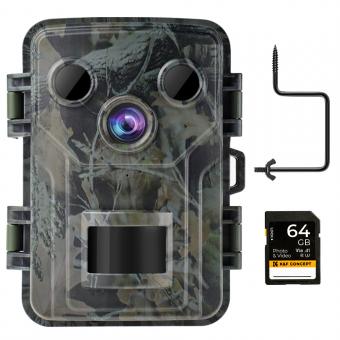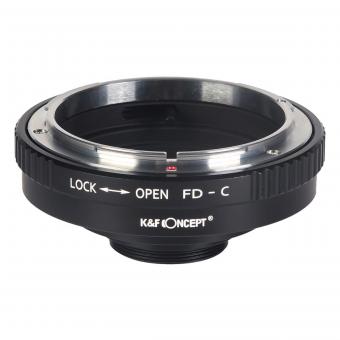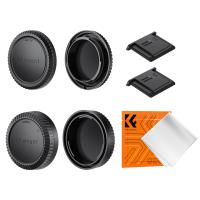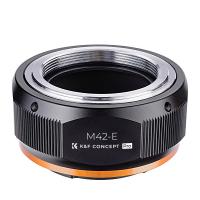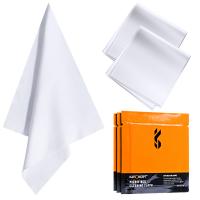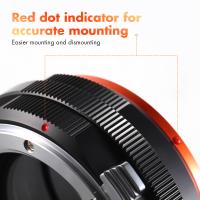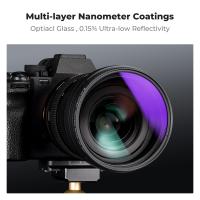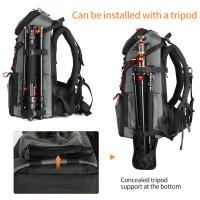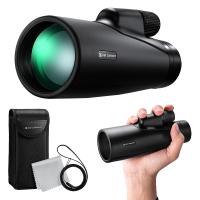How To Install Dead On Rangefinder ?
To install a Dead On rangefinder, follow these steps:
1. Start by unpacking the rangefinder and ensuring that all the necessary components are included.
2. Identify the mounting location on your firearm or bow where you want to attach the rangefinder. It should be easily accessible and provide a clear line of sight.
3. Use the provided mounting hardware, such as screws or adhesive, to securely attach the rangefinder to the chosen location. Make sure it is firmly fixed and aligned properly.
4. Once the rangefinder is securely mounted, check that it is level and facing the correct direction for accurate readings.
5. Depending on the model, you may need to calibrate or program the rangefinder according to the manufacturer's instructions. This may involve setting the desired unit of measurement or adjusting other settings.
6. Test the rangefinder by aiming at various targets at different distances to ensure accurate readings. Make any necessary adjustments as needed.
It is important to consult the specific instructions provided by the manufacturer of your Dead On rangefinder for detailed installation steps and any additional considerations.
1、 Mounting the Rangefinder on a Stable Surface
To install a dead-on rangefinder, it is important to mount it on a stable surface to ensure accurate readings. Here is a step-by-step guide on how to mount the rangefinder:
1. Choose the location: Select a stable surface where you want to mount the rangefinder. It should be a spot that provides a clear view of the area you want to measure.
2. Gather the necessary tools: You will need a drill, screws, a screwdriver, and a level.
3. Mark the mounting holes: Place the rangefinder on the chosen surface and mark the spots where you will drill the mounting holes. Use a level to ensure the rangefinder is straight.
4. Drill the holes: Using a drill, carefully create holes at the marked spots. Make sure the holes are deep enough to securely hold the screws.
5. Attach the rangefinder: Align the mounting holes on the rangefinder with the drilled holes on the surface. Insert screws through the holes and tighten them using a screwdriver.
6. Test the stability: Gently shake the rangefinder to ensure it is securely mounted. If it wobbles or feels loose, tighten the screws further.
7. Calibrate the rangefinder: Follow the manufacturer's instructions to calibrate the rangefinder for accurate measurements. This may involve adjusting settings or aligning the device with a known distance.
It is important to note that the specific installation process may vary depending on the model and brand of the rangefinder. Always refer to the manufacturer's instructions for the most accurate and up-to-date information.

2、 Aligning the Rangefinder with the Target Area
To install a dead-on rangefinder, you need to follow a few steps to ensure proper alignment with the target area. Here is a guide on how to align the rangefinder with the target area:
1. Choose the right location: Find a suitable spot where you have a clear line of sight to the target area. Make sure there are no obstructions that could interfere with the rangefinder's accuracy.
2. Mount the rangefinder: Use the provided mounting hardware to securely attach the rangefinder to a stable surface. This could be a tripod, tree stand, or any other stable platform. Ensure that the rangefinder is level and stable.
3. Power on the rangefinder: Turn on the rangefinder and adjust the settings according to your preferences. Some rangefinders have different modes for different types of targets, so choose the appropriate mode for your target area.
4. Aim at the target: Look through the rangefinder's viewfinder and aim it directly at the target area. Use the crosshairs or reticle to align the rangefinder with the desired target.
5. Take measurements: Press the measurement button or trigger to activate the rangefinder's laser. The rangefinder will emit a laser beam that will bounce off the target and return to the rangefinder, providing you with the distance measurement.
6. Fine-tune the alignment: If the rangefinder is not accurately measuring the distance, you may need to adjust the alignment. Some rangefinders have adjustable lenses or calibration settings that can be used to fine-tune the alignment.
7. Repeat for confirmation: Take multiple measurements from different angles to confirm the accuracy of the rangefinder. This will help ensure that you have aligned it correctly with the target area.
Remember to always follow the manufacturer's instructions for your specific rangefinder model, as the installation process may vary. Additionally, it is important to stay updated with the latest advancements in rangefinder technology, as new features and improvements are constantly being introduced to enhance accuracy and ease of use.
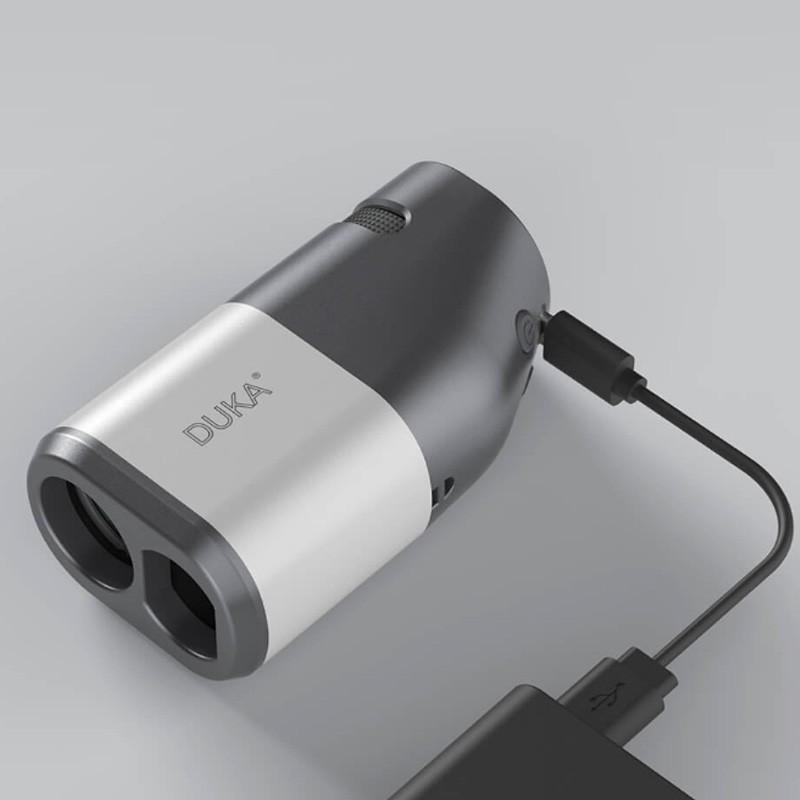
3、 Connecting the Rangefinder to Power Source or Batteries
To install a dead-on rangefinder, you will need to follow a few steps. The first step is to connect the rangefinder to a power source or batteries. This is crucial as it provides the necessary power for the device to function properly.
The most common way to power a rangefinder is by using batteries. Check the user manual or manufacturer's instructions to determine the type and number of batteries required for your specific model. It is recommended to use high-quality batteries to ensure optimal performance.
To install the batteries, locate the battery compartment on the rangefinder. This is usually located on the back or bottom of the device. Open the compartment and insert the batteries according to the polarity markings. Ensure that the batteries are inserted correctly to avoid any damage to the device.
Once the batteries are inserted, close the battery compartment securely. Some rangefinders may have a latch or screw to secure the compartment. Make sure it is tightly closed to prevent any power loss or damage.
If your rangefinder has an alternative power source option, such as a power adapter or rechargeable battery pack, follow the manufacturer's instructions to connect and install them accordingly.
It is important to regularly check the battery life of your rangefinder and replace the batteries as needed. This will ensure that the device functions properly and provides accurate measurements.
Always refer to the user manual or manufacturer's instructions for specific installation steps and guidelines for your particular rangefinder model.

4、 Adjusting the Rangefinder's Settings for Accuracy
To install a Dead On rangefinder, follow these steps:
1. Start by unpacking the rangefinder and familiarizing yourself with its components. Ensure that all the necessary parts are included in the package.
2. Next, locate the mounting bracket on the rangefinder. This bracket is used to attach the rangefinder to your bow or firearm. Make sure it is securely fastened.
3. Determine the optimal location for mounting the rangefinder. It should be easily accessible and provide a clear line of sight for accurate measurements. Many hunters prefer to mount it on the side of their bow or on top of their firearm.
4. Once you have chosen the mounting location, use the provided screws or adhesive to attach the rangefinder to the bracket. Ensure that it is firmly secured to prevent any movement during use.
5. After the rangefinder is securely mounted, turn it on and adjust the settings for accuracy. Most rangefinders have options to adjust the brightness of the display, the unit of measurement (yards or meters), and the mode of operation (such as scan mode or single measurement mode).
Now, let's discuss how to adjust the rangefinder's settings for accuracy:
1. Start by calibrating the rangefinder. This involves aligning the rangefinder's crosshairs with a known distance target. Choose a target at a known distance, such as a tree or a sign, and aim the rangefinder at it. Adjust the rangefinder until the displayed distance matches the known distance.
2. It is also important to consider environmental factors that can affect the accuracy of the rangefinder. Factors such as fog, rain, or glare can impact the rangefinder's performance. Some rangefinders have features like fog mode or target priority mode that can help compensate for these conditions.
3. Regularly check and clean the lenses of the rangefinder to ensure clear and accurate readings. Dust, dirt, or smudges on the lenses can interfere with the rangefinder's performance.
4. Lastly, practice using the rangefinder in different hunting scenarios to become familiar with its operation and to fine-tune your shooting skills. The more you use the rangefinder, the better you will become at accurately ranging targets.
In conclusion, installing a Dead On rangefinder involves securely mounting it to your bow or firearm. Adjusting the rangefinder's settings for accuracy is crucial for reliable distance measurements. Regular maintenance and practice will help you make the most of your rangefinder in the field.



